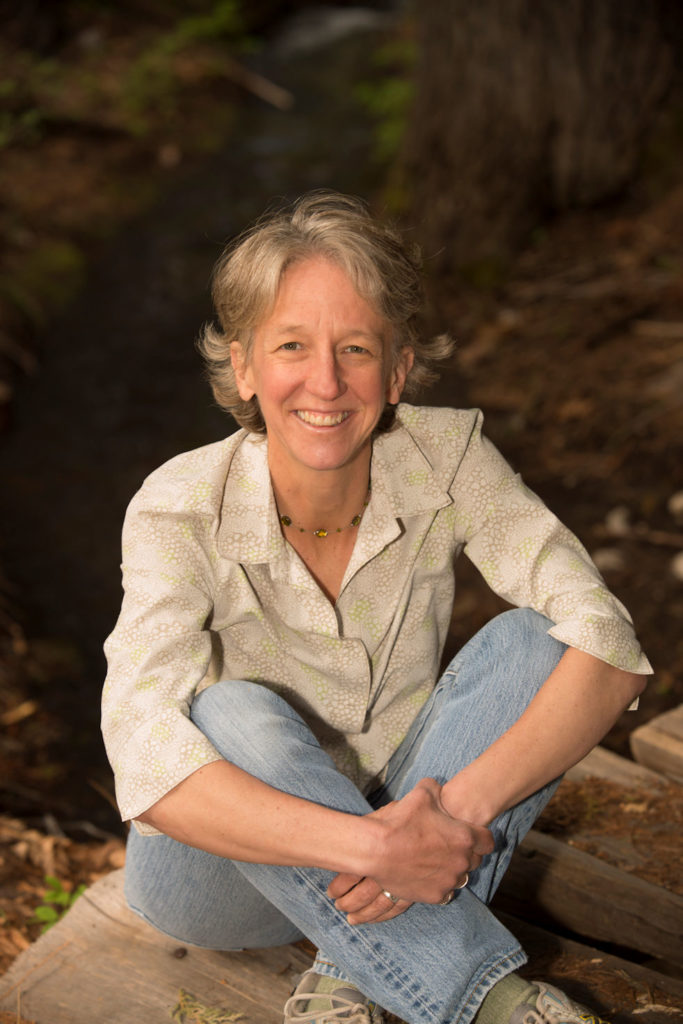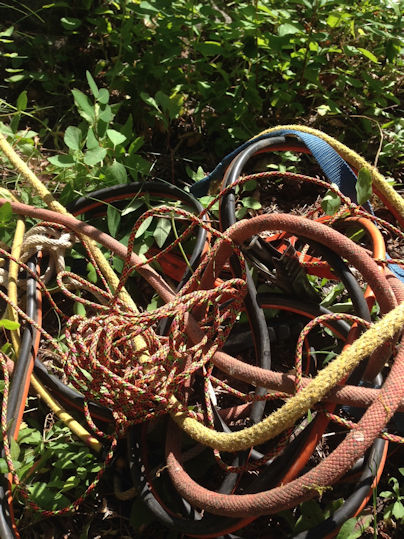
When we talk about environmental writing, one irony has always fascinated and sometimes frustrated me. Alongside chronicling the wonders of the non-human world, we’re writing about people trying to fulfill very basic needs—food, air, water, clothing, shelter—in sustainable ways, but doing so leads us into a dense tangle of politics, race, gender, and class. Too often, because the stories are so complicated, creative writers cede this territory to journalists and academics, as if to say: Let them wade into the weeds!
Of course that’s wildly wrong-headed. We need to write about the world around us and our place in it in creative and compelling ways. As stories. But how?
After many years of trying, I’ve learned a few lessons. If the lessons are contradictory, they’re lessons nonetheless.
1. Be audacious. Be humble.
A few years ago, I found myself craving a new way of talking about ecological renewal. Not restoration, not preservation, not conservation. Maybe reclamation? In my own (quite-tangled) book of narrative nonfiction Reclaimers, I decided to follow that word wherever it led. It was audacious of me as a non-lawyer to deconstruct legal strategies, as a non-bureaucrat to interrogate (and celebrate) the work of bureaucrats, as a non-indigenous person to tell stories about indigenous people. The key to pulling it off? I had to admit, over and over, how much I didn’t know.
Around the same time, my friend Kathleen Alcalá started writing a book about her high cholesterol diagnosis that led her to wonder how to find (and grow) healthy food on the island where she lives, which led her to interview grocers, doctors, ethnobotanists, wine makers, and chefs, and to delve into the history of Indian-Filipino farmers, Croatian fishermen, and Japanese-American landowners formerly incarcerated in internment camps, as well as her own upbringing in a Mexican-American family in California. The resulting book The Deepest Roots: Finding Food and Community on a Pacific Northwest Island defies genre in the most audacious ways.

Admittedly, finding a structure to hold so many disparate narrative threads can be a challenge. Less like a braid. More like a web. But that, too, seems right. If we believe in ecology—in the intricate ways all systems and species are interconnected—we can write straight into the tangle.
2. Embrace the personal. Avoid solipsism.
We talk a lot about where the “I” belongs in nonfiction. We ask the narrator in workshop: Why do you care? What is your stake? Such questions can feel superfluous in environmental writing. Maybe because the answer seems self-evident: We all care. (Or should.) Duh! Or maybe because we feel too small compared to all the stars in the sky, the trees in the forest, the fish in the sea. But as every writer knows, the universal stems from the personal.
In Raw Material: Working Wool in the West Stephany Wilkes finds vocation in sheep shearing and leaves a corporate job. Along the way she tackles the economics of wool production—from shearing to shipping to dyeing to weaving—and works her way to sustainable grazing as a means of carbon sequestration. Her personal story draws us in, but the perspective is never hers alone.
In a similar way, Marlenia Myers, a lifelong resident of Los Angeles, explores the ongoing saga of a creosote plant turned Superfund site near her late grandmother’s home in Winnfield, Louisiana. In her essays and book-in-progress, she dismantles stereotypes about the urban-rural divide and exposes ignorance and racism, while her affection for the citizens of Winnfield allows her to simultaneously explore the dangerous pull of nostalgia.
Myers’ family connection gives her unique authority. But even if your stake is pure curiosity and passion, your presence on the page creates intimacy. You can hold the reader’s proverbial hand, ask questions she would ask, express skepticism or outrage she might feel. You can be the tour guide through the tangle.
3. Interrogate injustice. Own your privilege.
If environmentalism has traditionally had one blind spot, it’s summed up in the clichéd hypocrisy: NIMBY. Not in my backyard. Activists protected their own neighborhoods at the expense of others, while naturalists wrote about venturing into pristine forests to gaze at waterfalls. The glaring privilege, in both cases, remained largely unexamined.
The plain truth is not everyone has equal access to clean air or water—much less pristine forests—and we have a responsibility to interrogate injustice.
But as research takes us into communities not our own, the issue of appropriation looms large. At every juncture, we need to ask: Is this my story to tell? Are there people living in the community who can tell it better? If so, we can elevate their voices. Or we can step out of the way. (In Reclaimers, I abandoned one narrative thread because the tribe involved was actively promoting the story in media outlets.) Still, the danger of appropriation doesn’t count as dispensation, an excuse to return to describing waterfalls (though I love a good waterfall as much as the next person.) In Rising: Dispatches from the New American Shore Elizabeth Rush models one excellent approach when she gives interview subjects short chapters where they speak entirely in their own unique unedited voices.
4. Increase your knowledge. Reject the language of expertise.
The opportunity to increase our own knowledge—and the reader’s—is one of the great pleasures of writing. Sharman Apt Russell has published books on an astonishing array of topics: butterflies, flowers, childhood malnutrition, and public lands grazing. (Her book Diary of a Citizen Scientist won the John Burroughs Medal Award for Natural History Writing.) Her work often contains a hefty helping of what she calls “veggies”: nourishing facts slipped into a story. I asked her how she manages to make so much information accessible. She mentioned the need for clarity, and to avoid jargon, the language of experts, at all costs. Instead, she urges writers to be intimate, to use language that expresses personal joy.
“Take the freedom in research-based prose to be full-throated,” she says. “To use figurative language—hyperbole, personification, metaphor. To use shifts to second person, shifts in tense, flash forwards, flashbacks, juxtapositions that are weirdly meaningful to you. Meta-nonfiction. Humor. To have fun, to be funny. To reflect. To be sad.”
5. Acknowledge urgency. Nurture the possibility of hope.
The reality of climate crisis surrounds us. From extreme weather to geopolitical migrations, we live with it daily. The most obvious way to address the urgency is simply to record the experience, whether you’re writing “environmental” stories or not. Descriptions of environmental changes belong in manifestos, op-eds, and investigative reportage, yes, and also in personal essays, in memoir, in short stories, and poetry, too.
Not just the urgency. The possibility of hope.
So often what draws me to environmental stories is the sheer energy of people fighting on the fringes, exploring solutions, working with shovels and saws, with computers and maps, with megaphones and musical instruments. Super heroes proliferate on the big screen, in the realm of so-called make-believe. They also surround us every day: sheep shearers, oyster farmers, citizen scientists, teachers, students, writers. Always writers.
Where does hope lie?
In
us.
___
Ana Maria Spagna is the author of several books, including Reclaimers, which received honorable mention for the Rachel Carson Book Award from the Society of Environmental Journalists, and most recently Uplake: Restless Essays of Coming and Going. She lives in the North Cascades and teaches in the low-residency MFA program at Antioch University, Los Angeles. Twitter: @amspagna. Facebook @anamariaspagna.

4 comments
Diane Gottlieb says:
Sep 18, 2019
Wonderful essay! I’m always impressed and inspired by Ana Maria Spagna’s ability to hold contradictions and break them open at the same time.
Patricia Henley says:
Oct 6, 2019
Good advice. Will share.
Claire Perez says:
May 26, 2020
This is very inspiring. I have a lot to learn and say about the environment and feel reluctant but maybe I can add my own brand of narrative to the story. Thank you!
David Bean says:
Jun 23, 2020
Thank you for the fruitful guidance. To follow the flow of sheep shearing I recommend “Poetry in Motion” as read by Jon Broderick for two and a half minutes found at inthetote. Sheep shearing as seen from the perspective of a salmon seine fisherman.